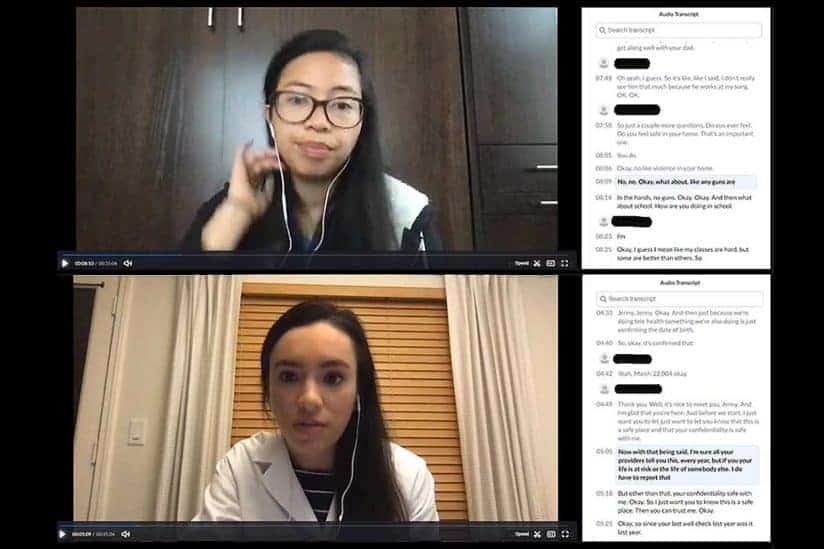In Eve Muller’s line of work, body language and face-to-face interaction are almost imperative. Muller is a standardized patient, a trained actor used for medical exams to provide students a realistic example of doctor-patient interaction and test their interpersonal skills as well as medical knowledge.
But just like almost every other line of work, she has been forced to interact strictly online due to COVID-19.
“We all just went, ‘Oh shoot. How is this going to even work, and how are we going to work?’” Muller said.
The result: Less overall work and standardized patients who spend most of their time calling their “doctors” and describing symptoms rather than acting them out.
Muller has been working as a standardized patient since 1990 and said she stumbled into the profession. Now she works part-time for USC to train other standardized patients for Keck School of Medicine of USC. As someone who has been in this line of work for 30 years, she said it entails simulating emotional issues, psychosocial issues and physical exam findings while portraying them in a realistic and humanistic way.
“I really love the work that I do and I’m grateful every day for this opportunity that I fell into accidentally,” Muller said. “It really is a privilege to be part of the education of someone who does what these students will one day do.”
The community of L.A.-based standardized patients is quite diverse as Muller said schools require patients of varying ages and ethnicities. USC has a pool of about 300 total standardized patients, though not all are active. About 100 of them stay in touch through Facebook, where Muller said they discuss auditions, plan get-togethers and in the wake of the COVID-19 pandemic, check in on each other.
Connie Nelson has been working as an actor and standardized patient for over 20 years and said that once the safer-at-home orders went into effect in March, many of the standardized patient opportunities were put on hold.
“This is supposed to be our busiest time because this is when all the schools test,” Nelson said. “So, what we do has definitely been limited.”
Though, even the available work has come with its share of challenges. Bob Rumnock has been working as a standardized patient since shortly after he arrived in L.A. a little over 20 years ago to pursue acting. He said standardized patient work has been the ideal job as it has allowed him to travel the world and utilize and strengthen the skills needed for other acting roles. As with most acting jobs, standardized patients use more than simply dialogue to convey messages.
“Standardized patients have a tendency to really focus on eye contact and facial expressions, and oftentimes it’s difficult, depending on where your camera is, to establish eye contact,” Rumnock said.
An example Rumnock gave was a standardized patient experiencing appendicitis. Normally the patient would verbally and physically communicate where the pain is, then the student would lay the patient back and check where the pain is specifically coming from. Without that physical interaction, the process almost becomes more of an interview.
“It’s really that human element that we focus on, and that’s a whole reason for standardized patients being there,” Rumnock said. “Otherwise you could simply watch a video.”
Though, with a rise in telehealth options, Muller said Zoom has been beneficial in training students to handle these remote appointments, such as pharmacy cases or anything that doesn’t require a physical examination. But other avenues like occupational therapy that rely on physical contact.
“The actual greatest loss to me is energy, because I feel like there’s an energy to everything we do,” Muller said.
Despite the shortage of standardized patient work, and the adjustments that have had to be made in order to work remotely, all three of them agree that there are a few lone bright spots throughout this pandemic.
As actors, they all understand the struggle of trying to work while also auditioning, and it’s why they’ve been able to create such a tightknit community, which has only grown stronger in the last few months. Muller said the sense of community has extended beyond checking in on one another, to running errands and even financial assistance for those that have struggled to get work.
“It’s a very powerful thing to be part of a community that helps one another boost their immune system, boost their spirits and trying to help each other stay healthy, not just physically but emotionally and mentally healthy,” Muller said.

